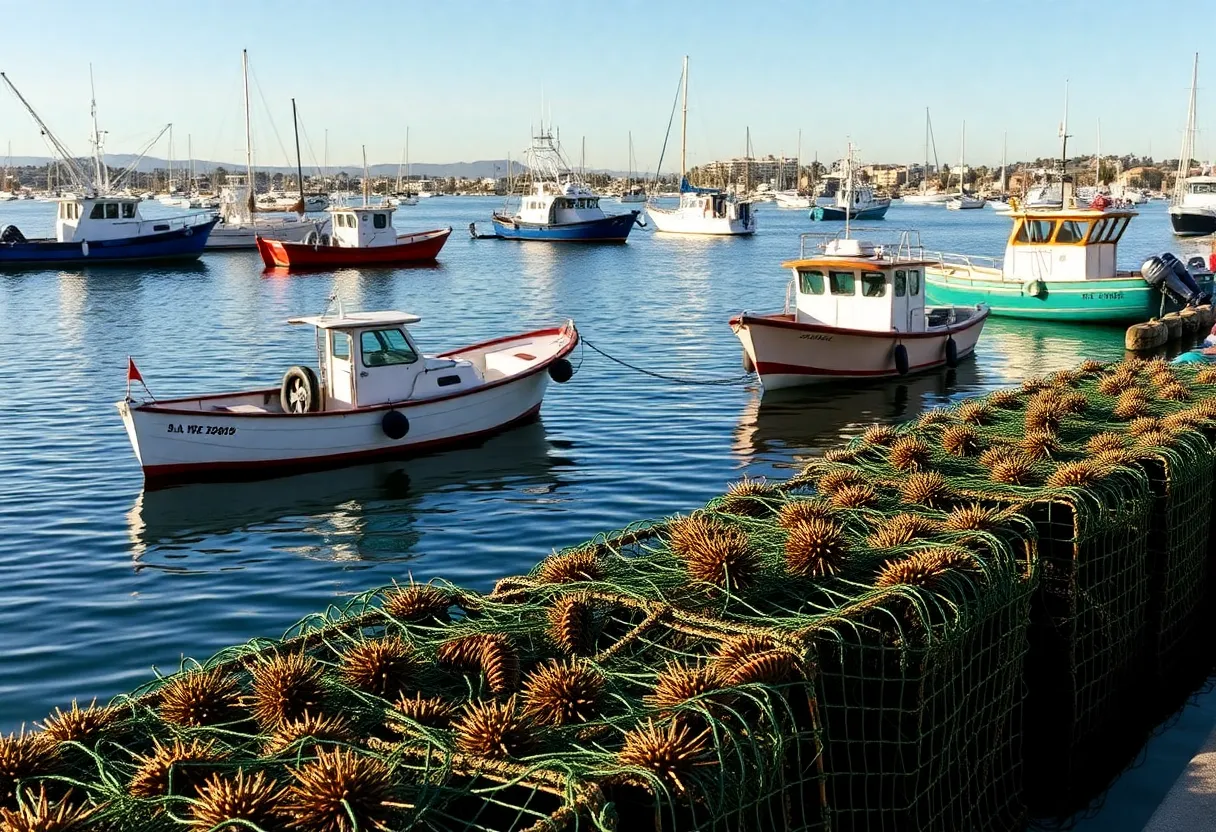News Summary
San Diego spiny lobster fishermen are experiencing one of the toughest seasons as wholesale prices have dropped to near-record lows, threatening California’s third most economically valuable fishery. Last year’s prices ranged from $20-24 per pound, but now fishermen are struggling with sales between $7-10 per pound, largely due to a decrease in demand from China. The financial strain affects not only commercial fishermen but also the local economy that benefits from recreational lobster fishing. To support local fisheries, consumers are encouraged to prioritize locally caught lobster.
San Diego spiny lobster fishermen are grappling with one of their most challenging seasons in years as wholesale prices for spiny lobster have plummeted to near-record lows. This drastic decline threatens the viability of California’s third most economically valuable fishery, posing significant financial challenges for local fishermen and the broader fishing community.
Last year’s prices for spiny lobster ranged from $20-24 per pound, but this year, fishermen are facing serious losses, with prices falling to between $7-10 per pound. The plunge in prices is largely attributed to China’s shift away from purchasing American lobster, as the country has opted to import lobster from New Zealand and Australia due to trade tariffs and changing consumer preferences.
The commercial season for spiny lobster opened in late September and runs through March, and while it started strong, prices for the catch collapsed shortly after. Fishermen are burdened by significant operational costs, which include bait, slip fees, fuel, and permits, making it increasingly difficult to sustain their livelihoods.
The financial strain extends beyond commercial fishermen; recreational lobster fishing contributes an estimated $33-40 million annually to California’s economy. San Diego Bay is recognized as one of the state’s most productive recreational fishing spots, heightening the impact of the current crisis on local economies.
To mitigate the effects of the market downturn, some fishmongers are attempting to honor previous pricing agreements, although achieving this is challenging amidst prevailing market pressures. Industry advocates are urging consumers to prioritize locally caught lobster as a gesture of support for struggling fishermen, enabling them to engage with the local fishing community and understand the origins of their food.
Spiny lobsters are regulated by the California Department of Fish and Wildlife, which enforces strict size requirements and mandates permits for both commercial and recreational lobster fishing. Due to these regulations, increasing harvest levels are not a feasible solution to counteract the declining prices.
The future of California’s fishing industry is a growing concern, with fewer young individuals pursuing careers as fishermen. The spiny lobster fishery is heavily regulated with only about 100 active permits from Point Conception to the U.S.-Mexico border, indicating a limited capacity for the industry to expand. Lobster traps, essential for catch, are labor-intensive, requiring significant physical effort to deploy and retrieve.
While the commercial lobster season is set from October 4 to March 20, higher catch rates generally occur at the beginning of the season. As conditions become challenging due to colder water temperatures and storms, many local fishermen begin to pull their gear from the water as early as January due to the rising costs and difficulties associated with continued fishing.
The sustainability of local fishing is under threat, as larger fishing operations increasingly dominate the industry, potentially limiting access to quality seafood products for local consumers. The emergence of platforms like Local Fish, a public-benefit initiative aimed at supporting small-scale fishermen, underscores the need for greater transparency in seafood sourcing while educating consumers on sustainable practices.
As small fishermen contend with market fluctuations, rising operational costs, and regulatory burdens, they face significant threats to their livelihoods. Consumers are encouraged to engage directly with local fishermen at markets, promoting a better understanding of the fishing practices and the origins of the seafood they purchase.
Deeper Dive: News & Info About This Topic
HERE Resources
Additional Resources
- CBS 8: Spiny Lobster Prices Crash
- Wikipedia: Lobster
- San Diego Union Tribune: Foodie Forecast on Lobster
- Encyclopedia Britannica: Lobster
- Blue Dot Living: Spiny Lobster Season

Author: STAFF HERE SAN DIEGO WRITER
The SAN DIEGO STAFF WRITER represents the experienced team at HERESanDiego.com, your go-to source for actionable local news and information in San Diego, San Diego County, and beyond. Specializing in "news you can use," we cover essential topics like product reviews for personal and business needs, local business directories, politics, real estate trends, neighborhood insights, and state news affecting the area—with deep expertise drawn from years of dedicated reporting and strong community input, including local press releases and business updates. We deliver top reporting on high-value events such as Comic-Con International, San Diego County Fair, and San Diego Pride Festival. Our coverage extends to key organizations like the San Diego Regional Chamber of Commerce and United Way of San Diego County, plus leading businesses in biotechnology, healthcare, and technology that power the local economy such as Qualcomm, Illumina, and Scripps Health. As part of the broader HERE network, including HEREAnaheim.com, HEREBeverlyHills.com, HERECostaMesa.com, HERECoronado.com, HEREHollywood.com, HEREHuntingtonBeach.com, HERELongBeach.com, HERELosAngeles.com, HEREMissionViejo.com, and HERESantaAna.com, we provide comprehensive, credible insights into California's dynamic landscape.





